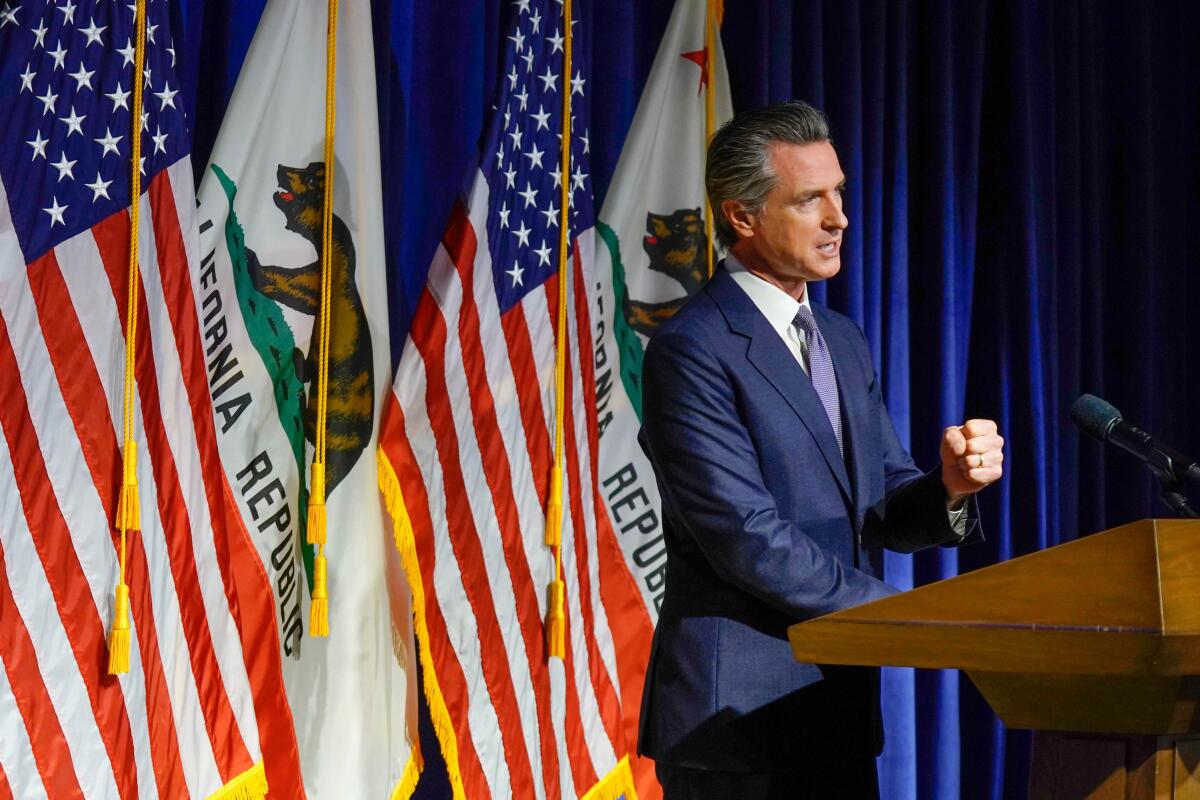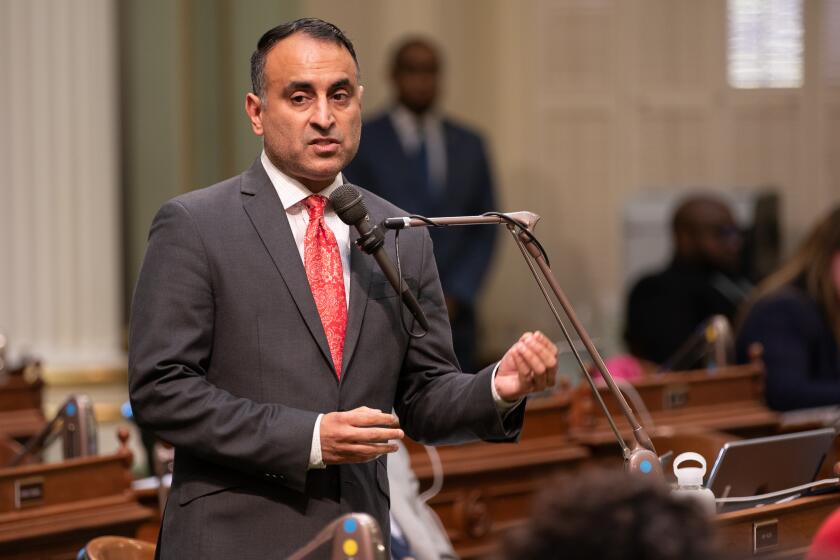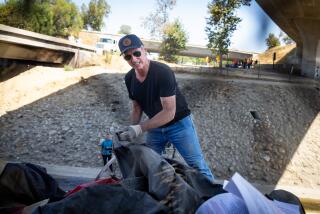California’s overflowing coffers hand Newsom ‘every politician’s dream’

SACRAMENTO — There seems to be nothing standing in the way of California Gov. Gavin Newsom.
Despite early concerns that the pandemic would weaken the state’s economy, another year of gushing tax revenue ensures that the politics of plenty will continue to define his first four years in office. A Legislature teeming with Democrats and his easy defeat of the recall election have made him even more powerful.
“He’s sitting on a massive budget surplus that is every politician’s dream,” said Susan Kennedy, a top aide to former Govs. Arnold Schwarzenegger and Gray Davis. “He’s got no credible opposition to reelection and the wind at his back. He should be able to tackle any major issue he sets his mind to.”
Newsom’s allies say his good fortune provides him a rare opportunity to focus on creating a better California for future generations, allowing him to spend time working on a long-term agenda that could become his legacy. But amid a recent statewide spate of smash-and-grab retail thefts, a worsening homelessness crisis and other pressing issues, Newsom’s record as governor will hinge on whether he can make progress on the problems of today and meet the needs of tomorrow.
“If we are simply focused exclusively on what California looks like 10 or 20 years from now, we will have missed our responsibility to improve life today,” said Jason Elliott, senior counselor to the governor. “But if we just focus on sort of quick political hits right now, we will not be building that foundation, and we will not be patching those holes in the safety net. I think part of what we try to do on a daily basis is balance those two things.”
In his race for reelection in November, Newsom is expected to face a similar cadre of GOP challengers who failed to excite voters during the recall. If that holds true, California’s overwhelmingly Democratic electorate will provide some level of insulation from the usual political threats of an election year, when a governor fighting to remain in office might otherwise pad his budget with flashy proposals.
Legislators move Assembly Bill 1400 forward in a contentious Health Committee hearing.
The Democratic supermajority in the statehouse also allows California’s government to avoid the type of partisan fights that create logjams at the federal level, though the state’s ambitious plans could be held back if reliant on action in Washington.
“Whether you agree or disagree with his politics and perspective, all Californians should be grateful that we have a situation where we can try some solutions to housing and homelessness and health costs, as opposed to just being polarized and unable to move,” said Daniel Zingale, a former advisor to Newsom. “[President] Biden would like to do a lot of the things for the nation that we’re doing here in California and mostly can’t.”
Newsom’s more than $286-billion budget proposal for 2022-23, unveiled Monday, follows the unconventional model that has become a hallmark of his governing style and drawn some criticism — bucking the approach of his predecessors, who narrowed their focus to a few signature policies. Instead, the 54-year-old Democrat has become a governor who “swings at every pitch,” as he often describes the critique of his wide-ranging agenda.
His plan includes a mix of high-profile proposals sure to grab attention, such as the expansion of Medi-Cal eligibility to all immigrants and a call for the state to manufacture insulin, and others to more quietly bolster the safety net and chip away at California’s problems.
The governor is proposing $1.2 billion over two years for forest health and fire prevention and suggests offering incentives for developers to build housing in downtown areas, in hopes of discouraging the kind of suburban sprawl into forests that has put new homes in the path of wildfires.
At a news conference Monday, Newsom touted the $12-billion, three-year investment he dedicated to address homelessness in the current state budget and proposed spending another $2 billion next fiscal year, including money to clean up encampments that have become a fixture in California cities. He also said he would “lean into” conservatorships, the controversial legal process in which an adult appointed by a court manages the affairs of another person.
Elliott said the state’s efforts include addressing affordability and expanding social services to keep people from becoming homeless in the first place, as well as short-term work on the ground to get people shelter and care.
Assemblyman Chad Mayes — a Republican-turned-independent from Yucca Valley who worked with the governor two years ago to deliver $10 million for homelessness in Palm Springs — lauded the state’s work to seek lasting solutions.
The governor’s plan lays out close to $10 billion in new spending on COVID, climate change, homelessness, inequality and ‘keeping our streets safe.’
“It’s easy to be brilliant when you’ve got a bunch of money, and I applaud the work being done on long-term solutions to homelessness,” Mayes said. “My hope is that the administration recognizes that Californians do not have an unlimited amount of patience, and the desire for immediate action is justified.”
For a governor who focuses little on the politics inside the office, aides say, Newsom appeared defensive Monday when asked how he can assure Californians that they will see tangible reductions in homelessness.
“It’s not an excuse, but the state of California had no plan on homelessness when I got here,” Newsom said.
He said his administration’s efforts have provided temporary shelter for 50,000 Californians and helped another 8,000 secure more permanent housing through the state’s purchase of motels, hotels and other buildings.
“That’s unprecedented in California history and, at the same time, not even close to where we need to go,” Newsom said.
Despite a potential lack of competitive challengers in his 2022 bid for reelection, Newsom’s top political strategist, Sean Clegg, said the governor has plenty of policies to campaign on: universal preschool, free community college, pandemic relief, climate change investments, expanding healthcare, free child care and providing shelter for the homeless, among others.
“There’s a real reviving of the social contract,” Clegg said. “He’s looking at the manifold challenges facing the state, and he’s going harder on all of them and at all of them at once.”
But the governor’s bombastic promises can sometimes lead Californians to expect more and often overshadow his achievements.
Sign up for Essential California
The most important California stories and recommendations in your inbox every morning.
You may occasionally receive promotional content from the Los Angeles Times.
“We can solve this. Homelessness can be solved,” Newsom said Monday. “It’s hard. It’s a tough issue. And California, we have a responsibility not just to acknowledge that but to do something about it.”
Newsom pledged on the campaign trail in 2018 that California would see 3.5 million new homes built by 2025. Figures from the Construction Industry Research Board indicate that the state is far behind in its quest to meet what Newsom now calls a “stretch goal.” But aides to the governor note that he has worked to hold cities accountable for not greenlighting enough housing development and his proposal to streamline and incentivize housing in downtown areas.
The governor’s new budget also provides $285 million for local law enforcement response to organized retail crime and $18 million to prosecute retail theft over three years, and another $5 million for anticrime task forces.
Zingale said the governor’s plan to expand Medi-Cal eligibility to immigrants, regardless of immigration status, delivers healthcare for all to California.
“The big gap in health coverage has been undocumented Americans,” Zingale said.
Newsom on Monday described the plan as “universal” healthcare, but the proposal falls short of that definition, said Anthony Wright, executive director of the advocacy group Health Access, who noted that affordability and administrative hurdles remain barriers in California, with many residents still uninsured. Immigrant rights groups said gaps in coverage will remain for people living in the country illegally who make too much to qualify for Medi-Cal but are ineligible to purchase a plan through Covered California due to their immigration status.
“I don’t begrudge the governor for making the statement that this is universal access, but the issues of affordability and administrative ease are important,” Wright said, adding that Newsom’s announcement is an important step toward universal healthcare.
Newsom said Monday that he hadn’t yet reviewed a plan in the Legislature to create a single-payer healthcare system, a model on which he campaigned in 2018. At a news conference in the Central Valley the next day, he cast single-payer as more of an aspirational goal and said the state is working with the Biden administration to secure federal waivers and is waiting on a report from a state commission on financing strategies.
In the meantime, Newsom said, he’s providing a more immediate solution by expanding healthcare access to all immigrants — a proposal that, if approved by the Legislature, would take effect in 2024.
“I’ll close by saying for me, single-payer is not a platitude. When you’re governor, you’ve got to be in the ‘how’ business,” Newsom said, adding that he believes in the healthcare financing model. “The ‘how’ at the state level is the question that needs to be answered thoughtfully.”
Times staff writers Melody Gutierrez and Liam Dillon contributed to this report.
More to Read
Sign up for Essential California
The most important California stories and recommendations in your inbox every morning.
You may occasionally receive promotional content from the Los Angeles Times.













